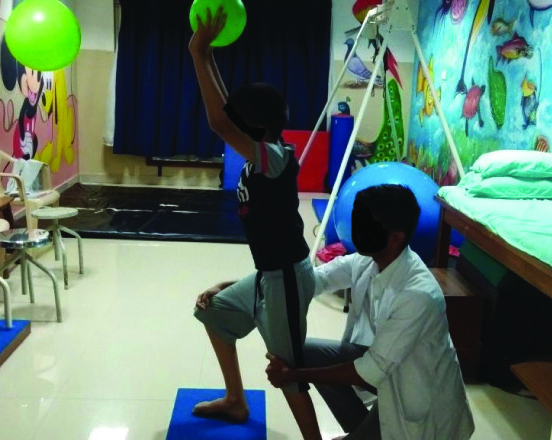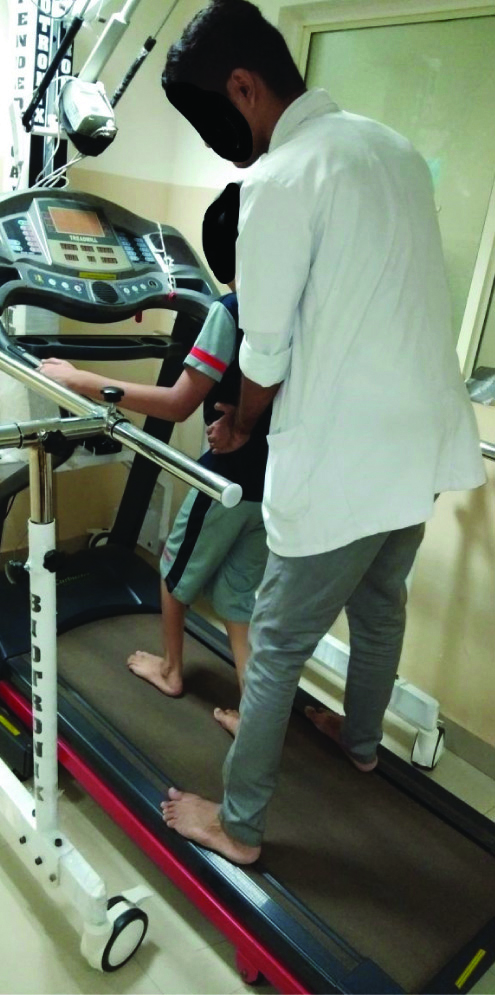Orthosis-A “Necessity or Choice” for Gait Training in Children with Spastic Paraplegic Cerebral Palsy
Rakesh Krishna Kovela1, Mukesh Kumar Sinha2
1 Assistant Professor, Nitte Institute of Physiotherapy, Nitte (Deemed to be University), Deralakatte, Mangaluru, Karnataka, India.
2 Assistant Professor, Department of Physiotherapy, School of Allied Health Sciences, Manipal Academy of Higher Education, Manipal, Karnataka, India.
NAME, ADDRESS, E-MAIL ID OF THE CORRESPONDING AUTHOR: Dr. Rakesh Krishna Kovela, Assistant Professor, Nitte Institute of Physiotherapy, Nitte (Deemed to be University), Deralakatte, Mangaluru-575018, Karnataka, India.
E-mail: rakeshkrishna.pt@gmail.com
Dear Editor,
Prescription and usage of various kinds of orthosis have been linked to gait training in children with Spastic Cerebral Palsy (CP). Loss of selective muscle control is one of the most important predisposing factors for gait abnormalities. Gait abnormalities are coping responses because of the primary abnormalities in the brain.
There are wide variety of studies conducted on application and usage of orthosis in children with Spastic CP and they prove that every orthosis is beneficial if it is used appropriately in solving the Pathomechanical problems in gait [1,2]. But limited data is available on importance of intense goal oriented physiotherapy program in improving the muscle control and the gait parameters in children with Spastic CP.
Hence, we conducted a case study on a school going child who was suffering with Spastic Paraplegia (Stage III) in Gross Motor Function Classification System (GMFCS). He was having spasticity of grade 1+ on Modified Ashworth Scale in bilateral hamstrings, adductors of hip and hip flexors. The child was able to walk with support but scissoring was noted without any fixed contractures. He and his family were reluctant on using an orthosis which was previously prescribed to them.
We took it as a challenge as it is a very rare diagnosis and started our therapy with a goal of attaining 10 steps independently without scissoring. We planned a five month treatment program of Neurodevelopmental Therapy by actively involving the child in task oriented activities of daily life and by activating base of support in standing with emphasis on postural control. Active knee extension while playing basketball and stair climbing in order to complete a task was primarily used [Table/Fig-1a,b]. Proprioceptive Neuromuscular Facilitation techniques such as dynamic reversals and rhythmic initiation were used for pelvis and lower limb to strengthen the muscles of pelvis and lower extremity [3] for 90 minutes a day, six days a week for five months. We emphasised 30 minutes in every session only on extension lag of bilateral knee joints which was 25 degrees prior to the beginning of therapy. We used Knee joint Range of motion, and parameters of gait as outcome measures.
Active knee extension in playful activity.


We focused more on activating his base of support in standing by commanding in various tasks, for developing appropriate posture control. In the beginning it was really difficult as spasticity was hindering our plan of strengthening the antagonist. We explained the importance of exercises both to the child and his family members. They followed home program of lengthening of tight muscles such as Bilateral hip adductors and hamstrings and strengthening of its antagonists.
To keep the child motivated we emphasised him to go regularly to normal school as parents were not convinced about special school, and involve in outdoor sports activities under supervision. This helped us to track the child without losing sessions throughout our treatment time of five months as he voluntarily involved happily in sports. This encouraged him to practice walking while playing sports. To our surprise he even started playing football. After five months there was hardly five degrees of extensor lag bilaterally and parameters of gait like cadence and stride length improved. We followed up the child for five months.
Thus, we conclude that if we can identify the problem efficiently and frame a goal to solve it with in-depth understanding of pathomechanics and muscle control, orthosis can be kept as a choice but not necessity.
[1]. Morris C, A review of the efficacy of lower-limb orthoses used for Cerebral Palsy Dev Med Child Neurol 2002 44:205-11.10.1017/S001216220100194312005323 [Google Scholar] [CrossRef] [PubMed]
[2]. Fish DJ, Crussemeyer JA, Kosta CS, Lower extremity orthoses and applications for rehabilitation populations Foot Ankle Clin 2001 6(2):341-69.10.1016/S1083-7515(03)00100-1 [Google Scholar] [CrossRef]
[3]. Kumar C, Ostwal P, Comparison between task-oriented training and proprioceptive neuromuscular facilitation exercises on lower extremity function in cerebral palsy-a randomized clinical trial J Nov Physiother 2016 6(3):1-9.10.4172/2165-7025.1000291 [Google Scholar] [CrossRef]